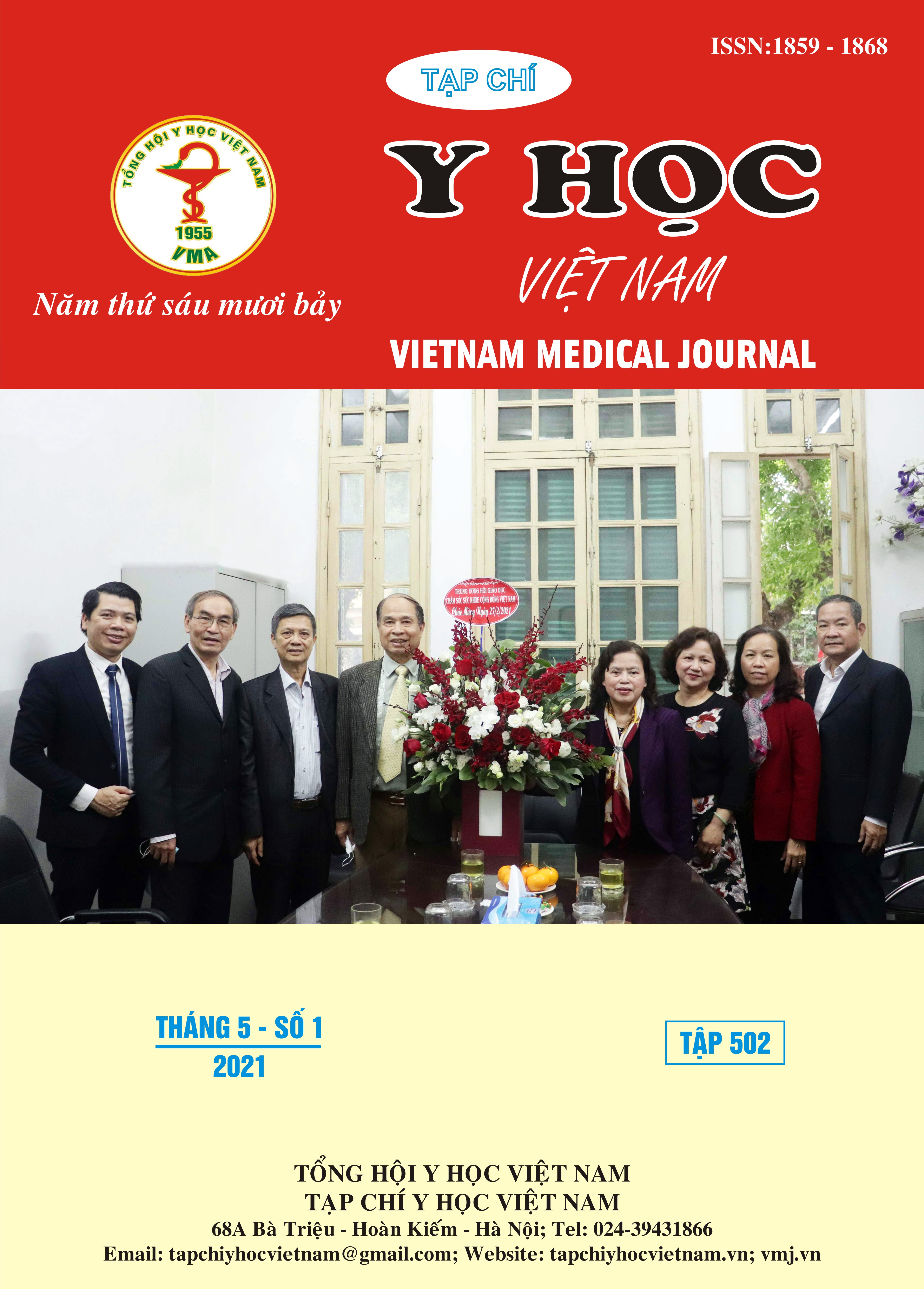RISK CATEGORY OF IHC4 SCORE AND SOME CLINICAL FEATURES IN INVASIVE BREAST CANCER WITH STAGE I-II
Main Article Content
Abstract
Regimens of hormonal receptor-positive breast cancer, stage I and II include endocrine therapy, consideration of chemotherapy for high risk of recurrence or poor prognosis. Purpose: Assessment of association between IHC4 risk groups and some clinical features of stage I-II breast cancer. Methods: 226 breast cancer patients were classified in risk subgroups by the criteria of IHC stain and evaluating their relations to clinical characteristics. Results: In the low IHC4 group, the proportion of patients without metastasized lymph node accounted for 94.7%, higher than the proportion of this group in the mean IHC4 group (73.3%), and in the high IHC4 group (accounting for 66.9%). The rate of 1-3 the positive lymph node (s) gradually increased in the different IHC4 groups from low to high respectively 5.3%; 26.7% and 33.1% (p <0.05). Conclusion: The low-risk group had the highest proportion of negative node, whereas the high-risk group was mainly found in the positive node.
Article Details
Keywords
Breast cancer, Risk stratification, Clinical feature, IHC
References
2. Cuzick J, Dowsett M, Pineda S, et al. Prognostic value of a combined estrogen receptor, progesterone receptor, Ki-67, and human epidermal growth factor receptor 2 immunohistochemical score and comparison with the Genomic Health recurrence score in early breast cancer. J Am Soc Clin Oncol. 2011;29(32):4273-4278. doi:10.1200/JCO.2010.31.2835.
3. Bruno S, Darzynkiewicz Z. Cell cycle dependent expression and stability of the nuclear protein detected by Ki-67 antibody in HL-60 cells. Cell Prolif. 1992;25(1):31-40. doi:10.1111/j.1365-2184.1992.tb01435.
4. van der Leij F, Elkhuizen PHM, Bartelink H, van de Vijver MJ. Predictive Factors for Local Recurrence in Breast Cancer. Semin Radiat Oncol. 2012;22(2):100-107. doi:10.1016/j.semradonc.2011.12.001.
5. Nguyễn Văn Chủ. Nghiên cứu áp dụng và phân loại phân tử ung thư vú biểu mô tuyến vú bằng phương pháp hóa mô miễn dịch. 2016.
6. Vũ Ngọc Hà. Nghiên cứu sự bộc lộ dấu ấn p53, Bcl2 và mô bệnh học trong ung thư biểu mô tuyến vú. 2019.
7. Abubakar M, Figueroa J, Ali HR, et al. Combined quantitative measures of ER, PR, HER2, and KI67 provide more prognostic information than categorical combinations in luminal breast cancer. Mod Pathol. 2019;32(9):1244-1256. doi:10.1038/s41379-019-0270-4.
8. Bakre MM, Ramkumar C, Attuluri AK, et al. Clinical validation of an immunohistochemistry-based CanAssist-Breast test for distant recurrence prediction in hormone receptor-positive breast cancer patients. Cancer Med. 2019;8(4):1755-1764. doi:10.1002/cam4.2049.
9. Sopik V, Narod SA. The relationship between tumour size, nodal status and distant metastases: on the origins of breast cancer. Breast Cancer Res Treat. 2018;170(3):647. doi:10.1007/s10549-018-4796-9.


